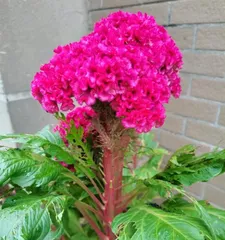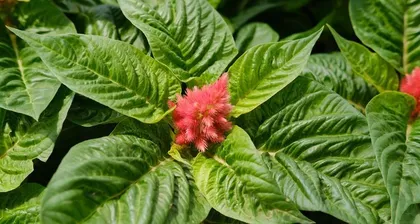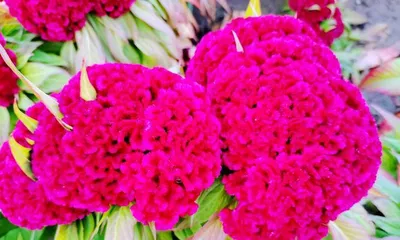Celosia is a plant with high ornamental value, its unique flower shape and rich colors are loved by many plant enthusiasts. However, due to the tropical climate of its origin, many people believe that celosia is only suitable for outdoor planting. In fact, however, celosia can also grow vigorously indoors and become a beautiful scenery in the home environment.

I. Understanding the Characteristics of Celosia
Celosia belongs to the Rubiaceae family and is a perennial herbaceous plant. Its most prominent feature is the bright color and varied shapes of its flowers, often used as garden ornamental plants. The leaves of celosia are generally oval or elliptical, with obvious longitudinal depressions on the leaf surface, and the petioles vary in length.
II. Choosing Suitable Varieties
There are many varieties of celosia, and different varieties have different colors, flower types, and sizes. Therefore, when choosing a suitable variety of celosia, you can choose according to your preferences and actual situation.

III. Providing a Suitable Environment for Celosia
The growth of celosia indoors requires appropriate environmental conditions such as temperature, humidity, and light. Generally, room temperature between 18-25°C is more suitable for celosia growth. Celosia needs sufficient light, but excessive direct sunlight can harm its growth. When placing celosia indoors, it is necessary to choose a position that avoids direct sunlight.
IV. Keeping the Soil Moist
Celosia is a plant that likes a moist environment, so keeping the soil moist is key. However, too much water will also adversely affect the growth of celosia, so it is necessary to water appropriately to keep the soil moist but not overly wet.
V. Reasonable Fertilization
Celosia needs sufficient nutrients during the growth period, so appropriate fertilization is required. Generally, organic fertilizer or chemical fertilizer can be chosen, and fertilization is carried out every 2-3 weeks, but attention should be paid to not using too much fertilizer.

VI. Timely Removal of Withered Leaves and Branches
During the growth process of celosia, leaves and branches gradually age and wither, affecting both aesthetics and growth. It is necessary to timely remove withered leaves and branches to keep the plant healthy.
VII. Preventing Pests and Diseases
Celosia is prone to pest and disease infestations during its growth, such as aphids, whiteflies, red spiders, etc. During the maintenance process, it is necessary to regularly check whether the plant has pests and diseases, and take corresponding measures in time if found.
VIII. Paying Attention to Air Circulation
The growth of celosia requires sufficient oxygen and carbon dioxide, so it is necessary to pay attention to air circulation during indoor maintenance. You can improve air quality by opening windows for ventilation or using an air purifier.
IX. Properly Pruning the Plant
During the growth process of celosia, dense foliage can affect air circulation and sunlight exposure, so it is necessary to properly prune the plant. Pruning can be done during the vigorous growth period of celosia to maintain healthy growth of the plant.
X. Reasonably Controlling Flowering Period
The flowering period of celosia is generally in autumn and winter, and during the indoor maintenance process, the flowering period can be controlled reasonably to make it bloom continuously and increase ornamental value. The flowering period can be controlled by appropriately shortening or extending the light time.
XI. Regularly Replacing Soil
Celosia absorbs nutrients from the soil during the growth process, so regularly replacing the soil can effectively improve the growth quality of celosia. It is generally recommended to replace the soil once a year.
XII. Avoiding Mold Growth
Celosia is prone to mold growth during the growth process, which affects plant health and ornamental effects. Therefore, it is necessary to avoid the production of humid environments, such as controlling watering reasonably and improving ventilation effects.
XIII. Paying Attention to the Dormancy Period of Celosia
Celosia has a dormancy period during its growth process, usually in summer and spring, during which the growth rate of celosia slows down. Therefore, during the maintenance process, it is necessary to adjust light, fertilization, etc., to help it enter the dormant state better.
XIV. Frequently Observing the Growth Condition of Celosia
Celosia is a relatively sensitive plant, and problems need to be discovered and solved in time during the growth process. It is necessary to frequently observe the growth condition of celosia and make corresponding adjustment measures.
XV. Conclusion
In general, celosia is a very suitable plant for indoor maintenance. As long as you master proper maintenance techniques, you can let it grow vigorously indoors and become a beautiful scenery in the home environment.
<|end_of_box|>